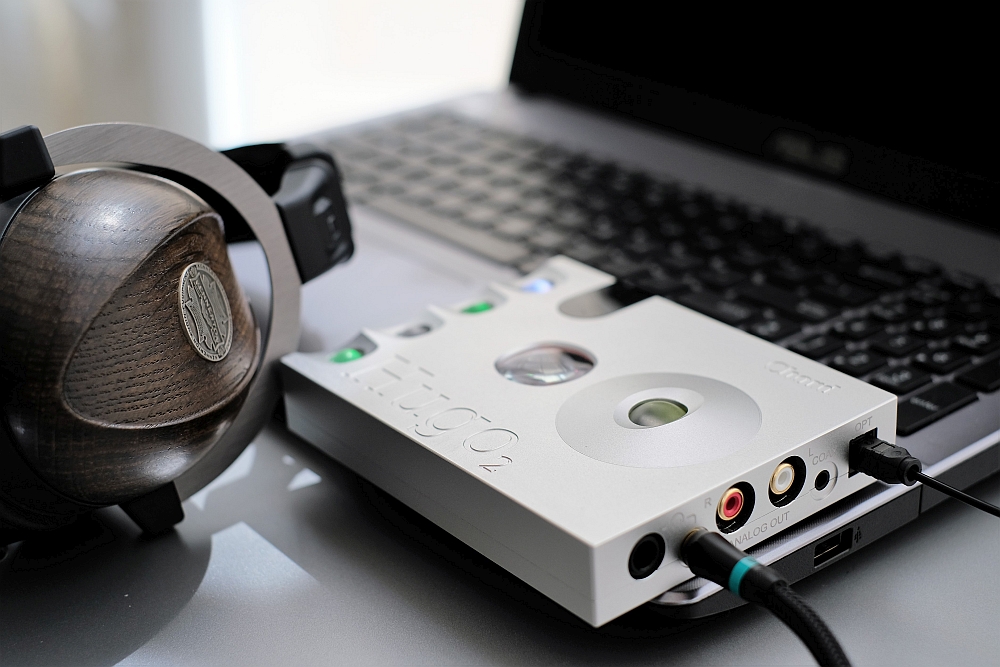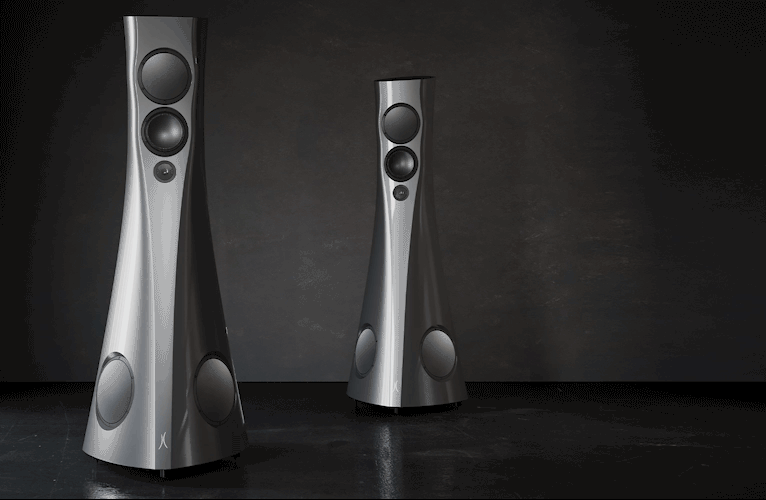The two main growth areas of audio playback right now are digital-to-analogue converters and the headphone/headphone amplifier space. For those wanting a better, higher fidelity experience, headphone sound quality can be dramatically improved by combining the two. And a DAC can also have anything from a mundane to a revelatory influence on a high-end audio system. So what is the result of an undertaking to combine both ‘disciplines’ when the company involved is Chord Electronics, a leader in high-tech engineering and pioneer of several proprietary technologies which place it at the cutting edge of digital playback?
Around three years ago Chord Electronics’ launched the Hugo digital-to-analogue converter and headphone amplifier. The Hugo’s all-round excellence created some sizable, nay Tsunami-level, waves in the high-end audio world with the product attaining tremendous consumer acceptance. Here was a diminutive component, exquisitely built, generously featured and powered via either a reasonably powerful battery system or good ole’ AC. Of course, its battery allowed the unit to be transportable for on-the-go audiophile sound or, as audio enthusiasts discovered, equally excellent performance was on offer when used as a DAC within the context of audio systems way beyond its price point. In fact, so extraordinary was the Hugo’s performance within high-end audio systems, it inspired the release of the Hugo TT, a unit sharing many of Hugo’s features and purely dedicated to audio system context via its design and ergonomics (nevertheless still sporting a headphone facility).
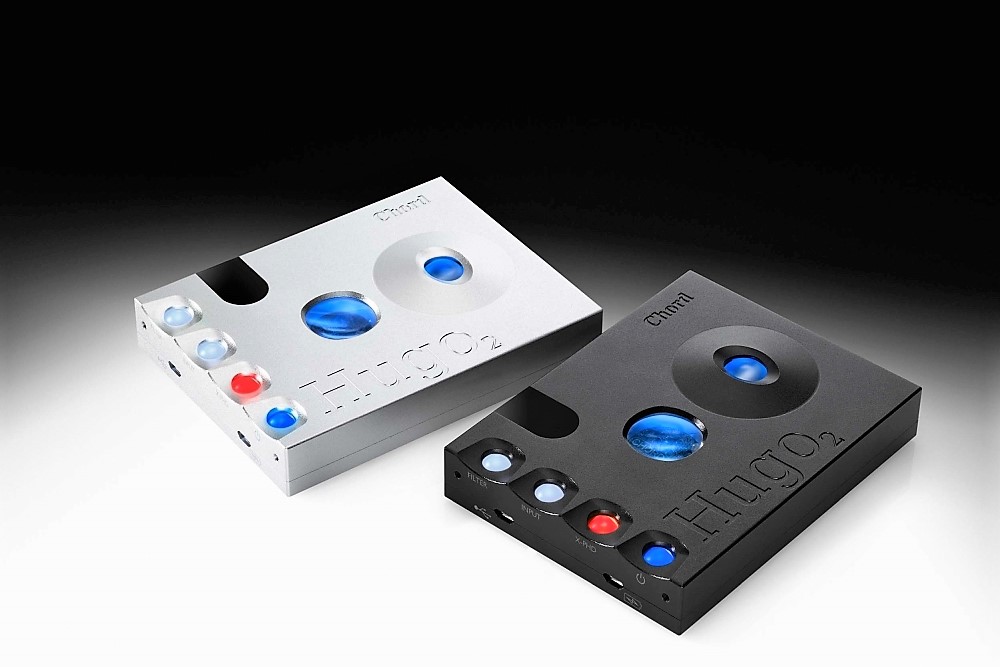
Then, just recently, Chord Electronics announced a major update – enter the Hugo 2, an evolution of the successful original replete with functional and operational improvements, additional features and the potential to expand the former’s performance envelope even further.
Hu-on-the-Go
Unpacking the Hugo 2 is reminiscent of the discoveries you’re greeted with when buying a new Apple iPhone – quality accessories packaging and great overall presentation. The unit comes with all that’s needed to get it happening within the various functional options available to the user. There are optical TOSLINK, mini-jack to TOSLINK and mini-USB cables while the card-style instruction manual deciphers the meaning of the various multi-colour buttons allotted to the unit’s multitude of functions.
The Hugo 2 feels like a solid slab of metal but it’s actually two solid pieces of high-grade aluminium – available in silver or black – almost seamlessly assembled together. The ‘business’ side is home to a row of semi-spherical translucent polycarbonate buttons hiding multi-coloured LEDs behind them which translate into functional alerts. Just below are the mini-USB-like socket for battery charging and AC power while at the other extreme is a USB connector for digital playback at up to 768kHz and DSD512 (as opposed to Hugo’s 384kHz and DSD128). The connectivity bay on the opposite end features both 6.5mm jack and 3.5mm mini-jack outputs, left and right RCA analogue outputs (being recessed within a ‘well’ they are a tad tight for ‘audiophile’ cables with large diameter RCA connectors) and 3.5mm mini-jack coaxial S/P-DIF (24-bit 384kHz) and TOSLINK optical (24-bit 192kHz) inputs.
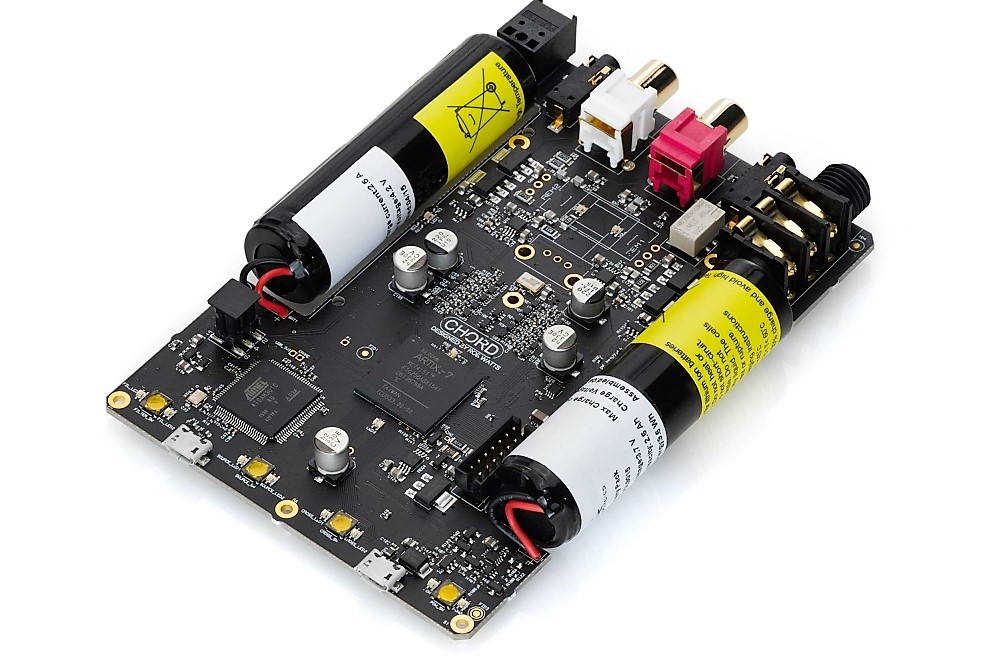
The Hugo 2 features high quality aptX Bluetooth playback compatibility (pairing code 0000) while the included infra-red remote is fully featured with volume and mute control, on/off activation, input switching, cross-feed DSP switching with three available levels (for use with headphones for alleviation of the ‘in-head’ phenomenon), four-option filter switching and LED dimming facility. On the filter switching, Chord Electronics’ Xilinx Artix 7 FPGA provides a modicum of user adaptability in terms of sonic preference with Filter 1 being essentially neutral, Filter 2 being ‘Incisive Neutral’ with high frequency roll-off, Filter 3 supposedly being ‘Warm’ and Filter 4 taking warmth a tad further by shaping Filter 3 with further high frequency roll-off. I found the effects of the filters to be subtle but nevertheless noticeable via a good set of cans and a revealing-enough high-end audio system.
As Chord Electronics’ founder John Franks and the company’s long-term contractor and digital specialist Rob Watts explain, the Hugo 2 features interpolation filtering with over 49,000 taps (nearly double that of Hugo) and Watts’ FPGA methodology is SOTA – and way beyond mere mortal understanding. Franks and Watts provide some further insights:
John Franks: We wanted to make the Hugo 2 better than Hugo 1 in every possible parameter. We started a discussion, Rob and I, and he adapts the technology to what I want the product to be, to my vision, in terms of top-level specifications and what I want it to look like. There are a lot of initial discussions in terms of the physical aspects to fit circuit boards and the battery, etc.
Rob Watts: We learned an enormous amount with the DAVE project. Basically, I used all that knowledge and put it into Hugo 2. Not just the FPGA platform but also the 2nd order analogue output stage, the reference supply and lots of other improvements on the analogue section. John is very good… he’s an engineer and he wants the best for a particular product even if Hugo 2 approaches the DAVE performance. It’s about providing the very best for each product, not about crippling a product to meet a market price. That conversation’s never happened with John.
John Franks: One of the compromises that we did have to make was in the battery life because we’re using four times the number of gates of the previous design which means more power dissipation.
Rob Watts: Yes, there are 44 dedicated DSP Cores, plus some added ones I create out of the fabric. I’m using the device to the max, 100 percent of the memory, 100 percent of the DSP Cores and 99.8 percent of the fabric of the logic device. Of course with DAVE we did things to the extreme, used audiophile components, etc and a much larger budget overall so it does perform better than Hugo 2. The power supply in Hugo 2 is extraordinarily good. In Hugo 1 the battery impedance, the crosstalk and the noise that was coupling between channels because of the boost supply and other things in the circuit… well, I actually have stereo separation at 1kHz of more than 144dB in Hugo 2. Often people measure the fundamental to one and the other. There’s a lot of distortion and crosstalk and often the fundamental is quite low but the 2nd, 3rd and so on is much higher and they will out-swamp the effect of the crosstalk. The crosstalk that you get from distortion is very important. The distortion from one channel corrupting another channel is very audible and vastly more important than the raw fundamental crosstalk. In Hugo 2 there’s a trace of 2nd harmonic at -172dB and nothing else. Noise floor is completely static and no other distortion at all and that’s driving 3 volts. You won’t get that with any other DAC. And I know that the isolation form the power supply is not going to get any better than what we’ve got.
In the cans
The battery system is quite intelligent with the Hugo 2 possessing multi-stage charging and powering itself down after 15 minutes of inactivity while over 24 hours of charge time will see the unit remain battery-activity-neutral (no further charging or discharging). I had zero issues, popping or sudden anomalies while using the Hugo 2 heavily for a number of weeks. Battery life was generous and, overall, the user experience is first rate.
I first auditioned the Hugo 2 via headphones and on the move as I took an afternoon walk around the neighbourhood and along tracks with panoramic views of the Blue Mountains. Headphones used were the extraordinary Kennerton Magister (my ultra-enjoyable reference cans), the beautiful Bowers & Wilkins P5 and the almost unique hybrid electrostatic Mitchell & Johnson HP1. Briefly, the excellent Klipsch in-ear Image X10i got a run too and, as always, impressed. No issues there while on the move with the Hugo 2 performing superbly and a massive improvement over cans-to-iPhone sonics. Nothing too surprising there, right?
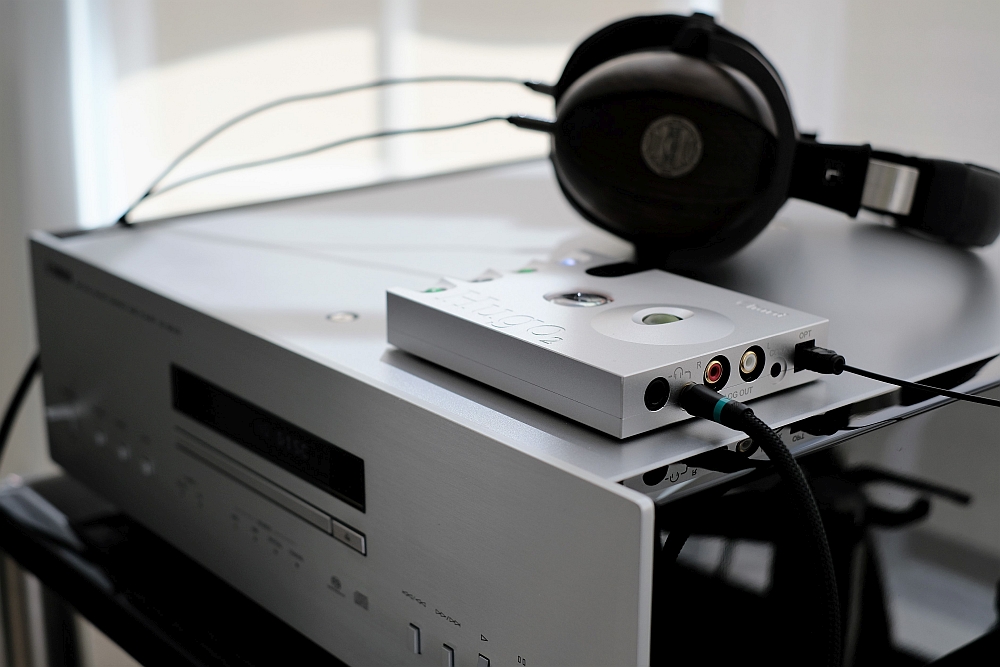
Back at the ranch and with Hugo 2 hooked up to a good CD transport and well-sorted computer playback system stepped things up rather substantially. The Hugo 2’s sound was stunningly resolute – no matter the headphones in use – while the sense of space, detail and bass reproduction were superbly handled. It’s an easy, musical sound that is never etched or bright while providing superb textural content and expressive dynamic contrasts.
Again, depending on the headphones in use, the low frequencies really impressed. My usual reference tracks with great bass content, such as Jackson Browne’s “Sergio Leone” from The Naked Ride Home, Marian Hill’s appropriately-named “Deep” from her Sway EP, were spectacular in terms of extension, control, transient attack and pitch nuance. Quite remarkable…
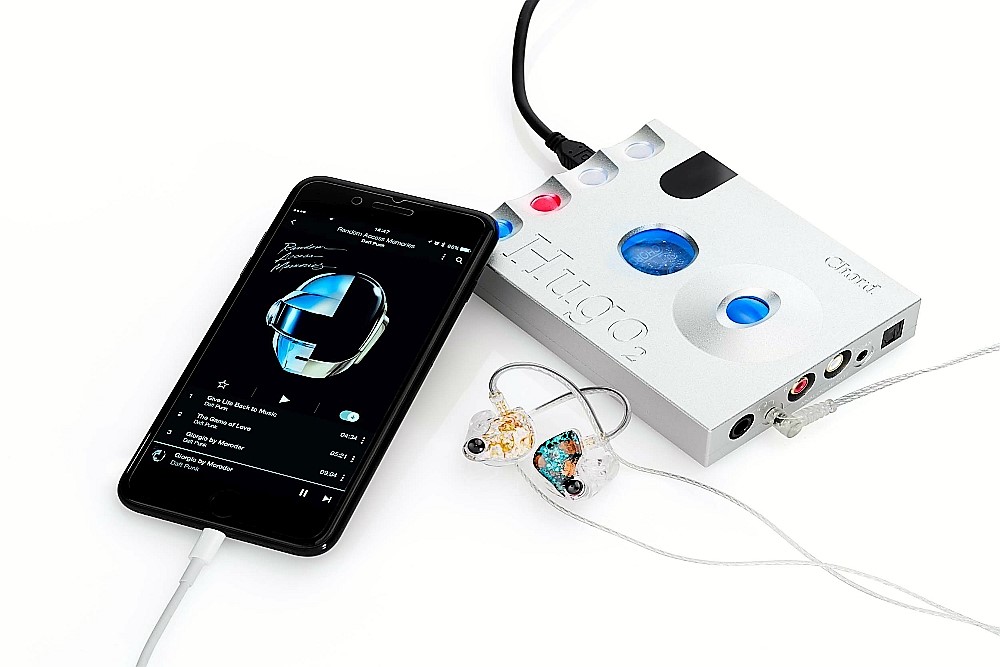
The Hugo 2 draws the best from your headphones and it gives you all the recording has to offer so the better the cans the more music that is delivered. It’s the sort of DAC/headphone amp combo that will have you yearning for the next headphone upgrade in the knowledge that no matter how high you climb with your head gear the Hugo 2 will follow – it will never be the limiting factor.
The high-end
But why limit yourself when the Hugo 2’s potential is so seductively beckoning for its use within the context of a reference level high-end audio system? Indeed that was my next step in this journey; to discover the perhaps yet untapped (pardon the pun) spectacles of this diminutive yet wondrous device.
The Hugo 2 was slotted in between both CD and MacBook sources and then fed into my reference The Gryphon Antileon power amplifier driving Wilson Audio Alexia with sILENzIO cabling used throughout. Going back to the bass tracks mentioned above provided a great sweaty workout for the double woofers on the Alexias. The bass registers were astonishingly tight and controlled with the depth-charges of “Deep” quite literally shaking my room’s foundations. I was actually discovering some low level resonances from non-fixed objects such as picture frames and such that were micro-rattling from the power of the bass on offer. This led me on a Blu-Tack placement campaign that will serve me for future bass explorations, thanks Hugo 2. So you get the idea – this DAC has superb bass output.

One of the most important parameters for this writer is accurate tonality. A piano, or a guitar, a voice, a natural sound has to be portrayed via the system in a recognisable timbre. If it doesn’t sound very, very close to what the instrument/voice should sound like (acoustically/non-amplified) the illusion is ruined. Again, the Hugo 2 excelled in this most crucial aspect of reproduction. Because of its superb balance and exceptional resolution throughout the frequency range, music communicated naturally and with an added sense of realism. Tori Amos’ beautifully-captured Bösendorfer in her classic Boys for Pele release sounded full, dynamic and accurate while nimbly exhibiting Amos’ playing style – sometimes heavy-handed, sometimes oh-so gentle.
Going back to my auditioning notes, I noticed I had underlined vocal renditions with a side note “to die for”. Indeed so, and again with Amos and the many other auditioned vocalists, male and female. The Hugo 2’s superbly layered and resolute midrange brings a sense of presence and realism to all vocals that had me on a binge with all manner of songsmiths. Again, I’ll say it – the Hugo 2 presents the listener with incredible amounts of detail, to the point that you may discover glossed-over nuances you never knew were there. But never, ever does this DAC sound etched, hard, brittle or bright. If that’s something you’re hearing, I’d dare say it would be a fault somewhere else in the audio system chain.

The reference system has enormous transient attack and dynamic capabilities and the Hugo 2 showcased these without stunting any area. Massive orchestral recordings, featuring percussion for example, such as the Lawrence of Arabia soundtrack envelop the listener and when those big tympani whacks erupt, you feel them while also appreciating their far-into-the-depths positioning within the orchestra. Yes, the soundstage has terrific instrumental and vocal imaging, layering and positioning focus with the soundfield spreading wide, tall and deep.
Conclusion
This is a beautifully constructed and pleasingly attractive design with an exceptional features set. Hugo 2 is engineered by true innovators at the cutting edge of digital design. It offers high-resolution playback with custom filters switchable on the fly, a top-level headphone amplifier stage, on-board aptX Bluetooth for wireless streaming, generous connectivity options and exceptional performance via the latest bespoke digital strategies.
This writer can’t think of an overall more powerful portable DAC combination than Hugo 2. That it crosses the oft debated factual or imagined divide between the headphone and the high-end audio system spaces while performing to the highest standards within both contexts is nothing short of remarkable. Elementary, Franks and Watts, you’ve done it again…
… Edgar Kramer
This email address is being protected from spambots. You need JavaScript enabled to view it.
Associated Equipment
- Speakers — Wilson Audio Alexia, Axis Loudspeakers VoiceBox S (nearfield monitor)
- Amplifier — Gryphon Audio Antileon EVO
- Preamplifier — Supratek DHT Reference, Lightspeed Attenuator LDR passive
- Sources — Yamaha CD-S2100 transport, Totaldac d1-core DAC, MacBook with BitPerfect software, AIFF files
- Processor — DEQX PreMate
- Cables — sILENzIO loom, Vermouth Audio Black Pearl loom (in for review)
Chord Electronics Hugo 2 Transportable DAC/Headphone Amplifier
Price: AU$3700
Warranty: Three years for Hugo 2, one year on the battery
Australian Distributor: Radiance Audio Visual
+61 (0) 2 9659 1117
www.radianceav.com.au
Chord Electronics
The Pumphouse, Riverside Park, East Farleigh
Maidstone ME16 9NB
United Kingdom
+44 1622 721444
www.chordelectronics.co.uk






